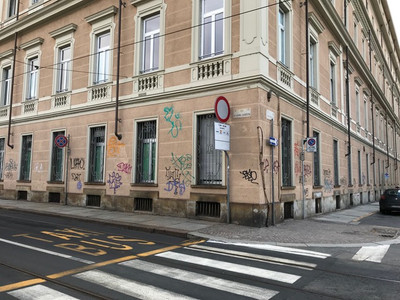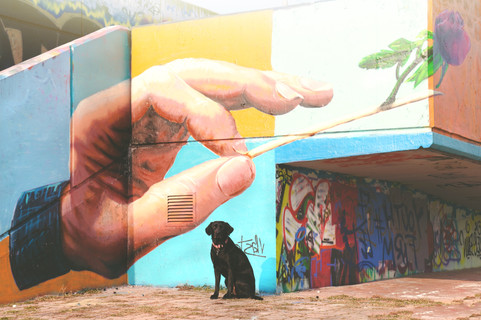99% of Graffiti Misses the Mark
- FLAPPER PRESS

- Aug 3, 2018
- 3 min read
Updated: Dec 14, 2018
by Carmel MacPherson
Recently I was traveling from London to Vicenza and, for the most part, the journey was a pleasant one except for the extraordinary amount of graffiti that was defacing so many homes and buildings on the outskirts of both London and Paris. Turin also presented yet another example of a city scarred by graffiti on so many of its beautiful old and new buildings.
Of course, graffiti is no stranger to most cities, and it set me thinking about what it is that inspires so many to do it?
I know that there are arguments put that it is an important element of artistic endeavor, a legitimate protest against inequitable social conditions and political policies. We are told that we should respect the perpetrators, welcome graffiti into our midst and be understanding of those we choose to randomly spray-paint our spaces.
I accept that those who are not treated equitably in our societies do have to have a voice to protest their situation. However, I also think that the form that is so often used (graffiti) is an ineffective method for doing so. Why?
Very little of the graffiti can be comprehended or understood. The “message” is seldom clear, and “if” taken as a call to arms, then 99% of it fails dismally. The same font seems to be used over and over to the point of sheer visual boredom, and little respect seems to be shown to fellow artists as new graffiti is sprayed all over other existing graffiti. Any messages are totally lost in the artistic mayhem.
Some graffiti, I do admit, is outstanding. Think Banksy. Even in Turin, there was some very clever and very well-done graffiti that was done in a stencil format with messages that engaged and set up an interaction between artist and viewer:
“You are looking in wrong direction.”
“Her passion made the chaos worthwhile.”
These artists create a conversation with the viewer. They provoke. They challenge. I forgive their choice of canvas because they think about what they want to say, to whom and how they can best convey their message. They ultimately inspire positive thoughts about what we could and should rise to as human beings.
I would also include in this vein an Eldridge Cleaver quote on a huge canvas that was hung at my University in 1968. It made you stop and think about your own values. It was a genuine call to personal and collective action. Decades later I still remember it.

“If you aren’t part of the solution you are part of the problem.” Eldridge Cleaver
There is art work I look at (regardless of where it is) that is ultimately uplifting. It makes me think about the world, about beauty, about injustice. It inspires me to think about the artist and the time and passion they put into the work. Shouldn’t we treasure and nurture the public messaging that does that and resist the de-spoiling of so many spaces that do the opposite?
My sense is that we have become so caught up in the “freedom to” philosophy that we have forgotten the countervailing rights of “freedom from.” In other words, your right to have freedom to express yourself however you please, wherever your please, should not impinge on my right to have freedom from the expense of cleaning your artistic expressions from spaces that are not yours to deface.






































Comments